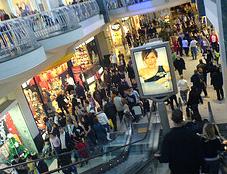 [5]BY Oregon Small Business Association [6],
[5]BY Oregon Small Business Association [6],
William Poundstone’s bottom line: consumers don’t really know what anything should cost. In his book “Priceless,” Poundstone zestfully and entertainingly explains the economics, psychology, and intellectual reasoning surrounding the ways in which producers and sellers take advantage of buyers’ lack of knowledge. Cost and price are two different notions; the first is a value, the second a number. Worldwide, price-consulting firms, experts in the psychology of pricing, advise companies on how to put the most profitable numbers on their products. They do so in several ways:
Anchoring, as every luxury retailer knows, uses an anchor, a high-priced product that may never sell but “makes everything else look affordable by comparison.”
Poundstone observes that in the midst of the recession, Ralph Lauren was selling a “Ricky” alligator bag for $14,000. (Update: It is now $16,995, making Lauren’s Tiffin Bag a steal at just $2,595). The truth is, anchoring works. Williams-Sonoma once offered a fancy breadmaker for $279. Soon it added a $429 model. The costly model flopped, but sales of the cheaper one doubled.
Invisible shrinkage allows businesses to hide cost increases; the price and appearance of the product stay the same, but the contents shrink “invisibly.” Soapmakers change the contour of the bar, shaving off a half-ounce, and peanut butter manufacturers increase the size of the “dimple” in the bottom of the jar to decrease contents. When, after repeated changes, this ruse meets the point of no return, the company introduces a “new, economy-size package” at a higher price, making comparisons difficult, and a new cycle of shrinkage ensues.
Menu bracketing is a technique used by restaurants to bracket two or three sizes of one item in such a way that it pushes you to choose the one they want to sell; it may look like the cheapest but in reality isn’t.
In bundling, several items are sold together for a ‘bargain’ price, which encourages the customer to buy more items than he or she intended, thereby boosting profits. By frequently shifting the offerings within bundles, the restaurant deliberately creates confusion, and the customer can never easily compare prices.
Shopping direction studies show that shoppers who move through a store in a counterclockwise direction spend more. Supermarkets, therefore, usually place their main entrance on the right of the building to encourage counterclockwise shopping.
Perhaps one of Poundstone’s starkest examples of the fluidity of pricing is the gas-station air machine that “pulls two of the most audacious gifts ever conceived.” One side sells air, the other side sells vacuum. Yet the price of the air has “little to do with the amortized cost of the machine and everything to do with psychology.”